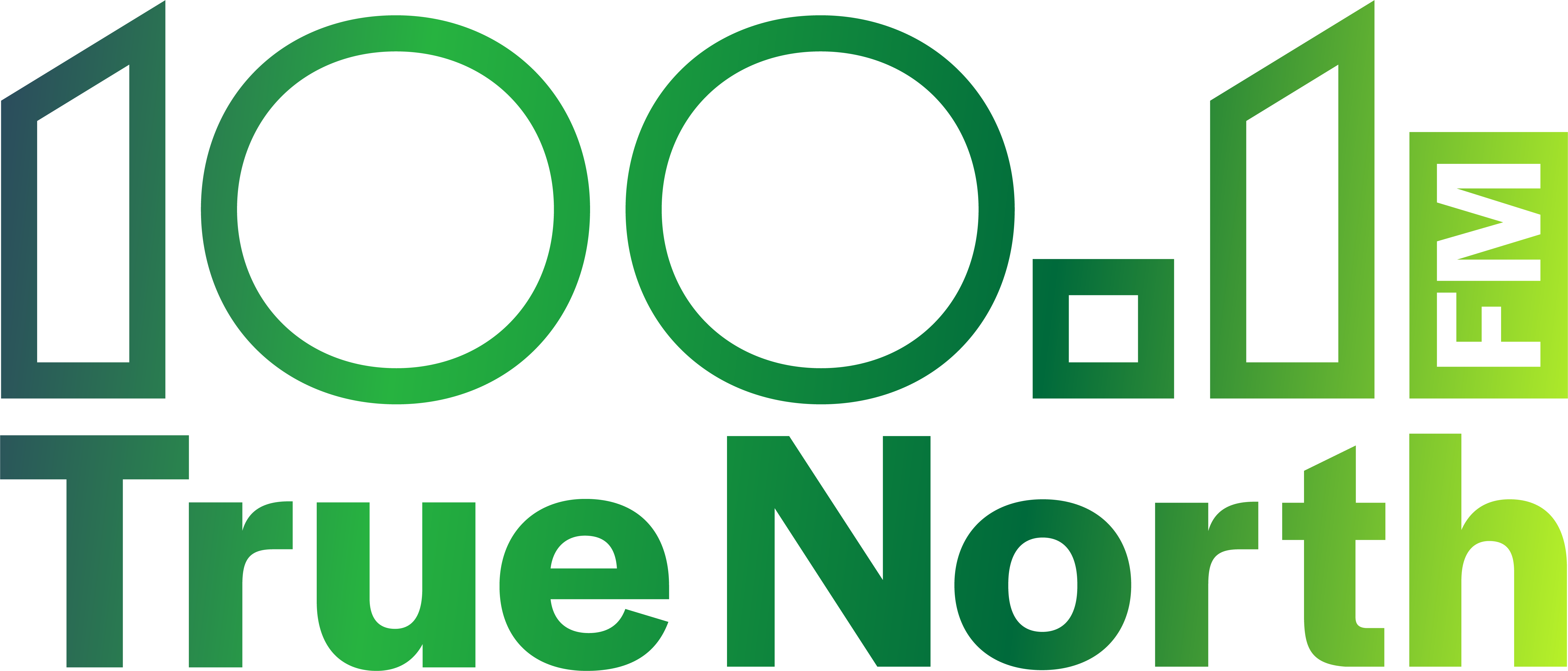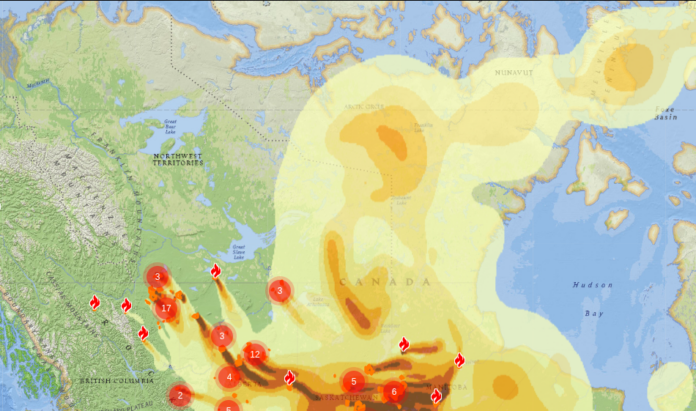NWT residents lamented over the weekend that wildfire smoke is settling in as a routine part of the wildfire season, along with wildfires. Folks across the region responded to what might be called a ‘smoke system’ drifting north and east due to wildfires and windy conditions forecasted earlier this week. In response, officials issued a wildfire smoke advisory for the Dehcho, South and North Slave regions.
It’s become a routine part of life in the territories, Martin Darku told True North FM. Darku has lived in Yellowknife for over two decades now. Darku pointed out that smoke effects from forest fires vary depending on location, wind and air currents, but they have become a constant during forest fire season.
“Every summer it’s becoming a thing. Every summer, we have to deal with forest fires. Sometimes it’s not close by, sometimes it’s just south from here, and the wind direction just brings it here,” he lamented.
Diagnosed as an asthmatic since youth, Darku said when conditions are smokey outside he avoids going out. Darku has two young children ages 5 years and 2 years old. Darku explained he practices caution especially when it comes to his children and smoke conditions outside.
“I know when to stay inside, but with the kids I just don’t want to take chances, because they are too little to be experiencing smoke,” he emphasized.
Darku said he first noticed the smoke conditions mid-week around Wednesday but Saturday morning the conditions were much more evident with a “foggy” looking sky and smell of smoke as soon as he stepped outside.
Darku explained it can be difficult for children because they want to go outside and play at the playground, but on days with heavy smoke conditions, it’s not possible. The family opted to stay indoors and do indoor activities instead, reading and enjoying a Saturday night movie together.
According to Environment Canada’s online smoke maps, most of the smoke affecting N.W.T. seems to be coming from B.C. and northern Alta. but what might be called ‘smoke system’ seems to be fed by wildfires even south of the border with the help of strong winds and air currents.
Environment Canada’s online maps show that the smoke is spreading far up into the most northern regions of N.W.T.
The provinces of Man. and Sask. have both declared states of emergency due to wildfires ravaging the region. As of Saturday Alta. had nearly 30 wildfires deemed “out of control” by fire officials. On Saturday, B.C. had over 60 wildfires burning.
NWT Fire issued a wildfire smoke advisory on Saturday evening for the Dehcho, South and North Slave regions.
“Residents in the Dehcho, South and North Slave regions will be exposed to high levels of wildfire smoke originating from the southern provinces. The smoke is leading to very poor air quality and diminished visibility,” warned officials.
On the border between N.W.T. and Alta. in places like Wood Buffalo National Park, smoke was heavy.
“Smoke from the fire is impacting visibility along Pine Lake Road,” warned Wood Buffalo National Park Fire crews on Saturday.
In places like Fort Smith, the smoke due to wildfires was highly visible to Fire crews.
“Large smoke plumes may be visible from Fort Smith from these wildfires and the fires burning in Alberta/WBNP,” noted NWT Fire in a social media post.
Across the South Slave and North Slave, along with the Dehcho, people could see and smell the effects of wildfire smoke.
In the city of Yellowknife, warm weekends usually see sidewalks bustle with afternoon activity. Just stepping outside, the smell of smoke was heavy in the air. A grey-white smog hung heavy in the sky and began lifting in the afternoon when the sun finally began to peak out again. Environment Canada’s Air Quality Health Index showed a level was “very high risk.”
For those who were walking outside or out on their bikes, some could be seen wearing masks.
Michael, a local cab driver who has lived in Yellowknife for nearly 15 years, said conditions like these make it difficult for people to walk outside. Michael told True North FM at times like this he takes time to drive family and friends even on his day off, to get them where they need to go to ensure they avoid being outdoors during heavy local smoke conditions. Over the weekend, like many Yellowknifers, he opted to stay indoors, visiting friends and family for an in-house cup of homemade coffee.
“And so it begins! Hoping it doesn’t last too long!” Facebook user Elizabeth Tamblyn Brance posted over the weekend.
“Stay safe and inside until this blows over, literally!” was the message another local Yellowknife resident shared on social media this weekend, which seemed to sum up the general sentiment of many folks in the territories.
NWT Fire posted a link to GNWT’s Air Quality information site where more resources and links are available including Environment Canada’s air quality monitoring site.





